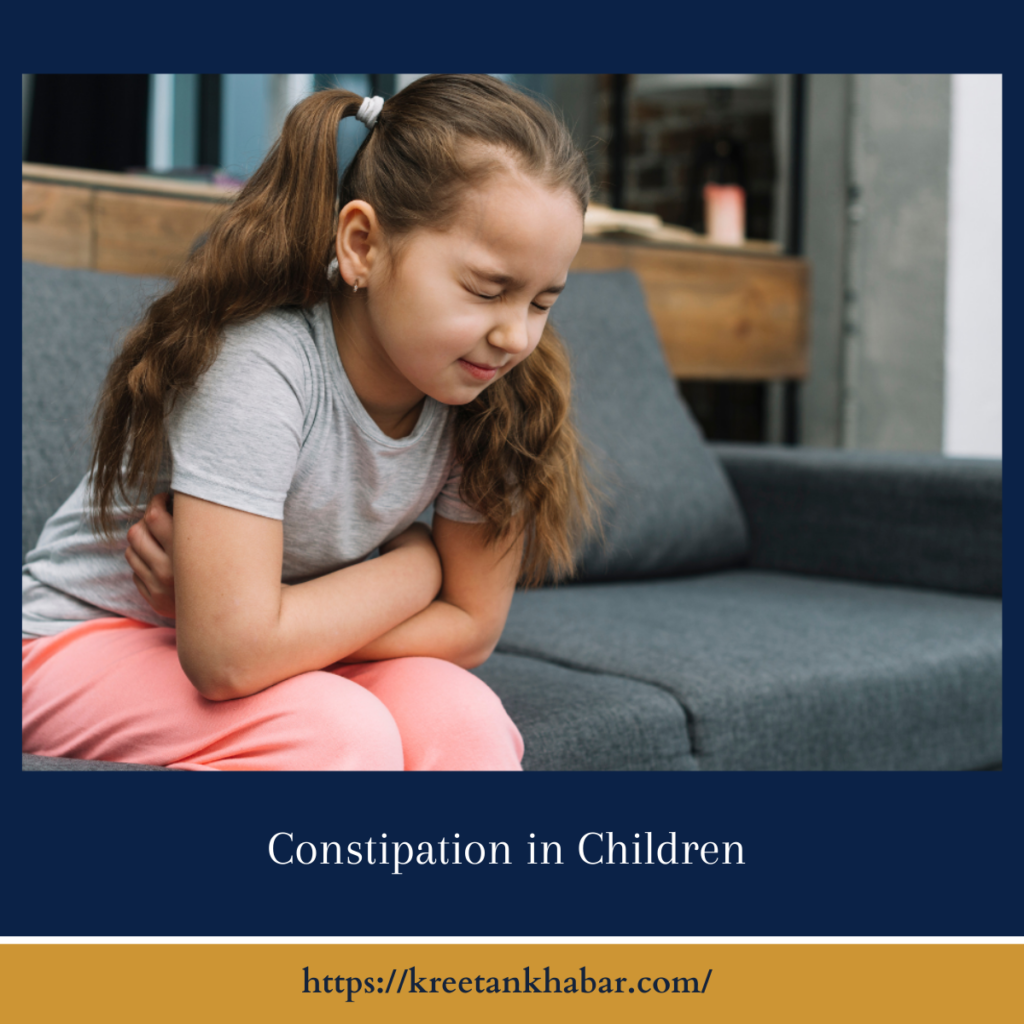Constipation in Children: Causes, Symptoms, and Management
Constipation is a common gastrointestinal issue that can affect children of all ages, causing discomfort and distress for both the child and their parents. In this article, we delve into the causes, symptoms, and management strategies for constipation in children, providing insights to help navigate this common childhood ailment.

Causes of Constipation in Children
Constipation in children can stem from a variety of factors, including diet, hydration, and lifestyle habits. A diet low in fiber and fluids can contribute to sluggish bowel movements, making it harder for the stool to pass through the intestines. Additionally, withholding bowel movements due to fear of pain or discomfort, often stemming from previous painful experiences, can exacerbate constipation. Certain medical conditions, such as hypothyroidism or irritable bowel syndrome, can also lead to constipation in children. Moreover, changes in routine, such as starting school or traveling, can disrupt regular bowel habits and trigger constipation episodes.
Symptoms of Constipation in Children
Recognizing the symptoms of constipation in children is crucial for early intervention and management. Common signs of constipation include infrequent bowel movements, typically fewer than three times per week, and hard, dry stools that are difficult and painful to pass. Children may also experience abdominal pain or cramping, bloating, and a feeling of incomplete evacuation after bowel movements. In some cases, constipation may lead to fecal incontinence, where liquid stool leaks around the hardened stool mass, causing embarrassment and distress for the child.
- Change in Behavior: Constipation in children can sometimes manifest as changes in behavior, such as increased irritability or moodiness. This can result from discomfort and frustration caused by the inability to pass stool comfortably.
- Bedwetting: In some cases, constipation can lead to nighttime bedwetting or urinary accidents. The impacted stool in the rectum can put pressure on the bladder, reducing its capacity and leading to involuntary urination during sleep.
- Rectal Bleeding: Straining during bowel movements caused by constipation can irritate the delicate tissues in the rectum, leading to small tears or fissures and subsequent rectal bleeding.
- Loss of Appetite: Children experiencing constipation may exhibit a decreased appetite or reluctance to eat. The discomfort and bloating associated with constipation can suppress appetite and make mealtime less appealing.
- Frequent Urination: In some cases, constipation can cause children to experience frequent urination or urgency to urinate. This can occur due to the pressure exerted on the bladder by the impacted stool in the rectum.
- Palpable Abdominal Mass: In severe cases of constipation, a palpable mass or lump may be felt in the child’s abdomen. This mass represents the accumulation of hardened stool in the colon and can be detected during a physical examination.
- Recurrent Urinary Tract Infections (UTIs): Chronic constipation can increase the risk of urinary tract infections in children. The presence of fecal matter in the colon can put pressure on the bladder and urethra, leading to incomplete emptying of the bladder and increased susceptibility to UTIs.
- Halitosis (Bad Breath): Chronic constipation can sometimes result in halitosis or bad breath. This occurs as the buildup of waste material in the colon can produce foul-smelling gases that are expelled through the mouth, contributing to unpleasant breath odor.
- Skin Irritation: Children with constipation may experience skin irritation or redness around the anal area due to frequent straining during bowel movements. This can lead to discomfort and even the development of skin rashes or inflammation.
- Emotional Distress: Constipation can also impact a child’s emotional well-being, causing feelings of embarrassment, shame, or frustration, especially if they experience accidents or difficulty discussing their symptoms with caregivers or peers. Addressing the psychological aspect of constipation is crucial for comprehensive management and support for the child’s overall well-being.
Management Strategies for Constipation in Children
Managing constipation in children involves a multifaceted approach aimed at relieving symptoms and promoting regular bowel habits. Dietary modifications play a central role, with a focus on increasing fiber intake through fruits, vegetables, whole grains, and legumes. Encouraging adequate hydration by offering water or diluted fruit juices can also soften the stool and facilitate bowel movements. Establishing a regular toilet routine and creating a comfortable and relaxed environment for bowel movements can help alleviate anxiety and encourage regularity. In some cases, over-the-counter laxatives or stool softeners may be recommended under the guidance of a healthcare professional to provide short-term relief. However, it’s essential to avoid long-term reliance on laxatives, as this can lead to dependence and worsen constipation over time.
When to Seek Medical Attention
While occasional constipation is common and usually resolves with dietary and lifestyle changes, persistent or severe constipation may warrant medical evaluation. Parents should seek medical attention if their child experiences prolonged constipation, accompanied by symptoms such as blood in the stool, severe abdominal pain, or unintended weight loss. Additionally, if constipation persists despite home remedies and dietary adjustments, a healthcare professional can provide further evaluation and recommend appropriate treatment options.
Conclusion
Constipation is a common gastrointestinal issue in children, with various causes ranging from dietary factors to medical conditions. By understanding the causes, symptoms, and management strategies for constipation, parents and caregivers can help support their child’s digestive health and well-being. With early intervention and appropriate treatment, constipation in children can be effectively managed, allowing them to enjoy a healthy and comfortable childhood.
Read also : Exploring the Delightful Boost of the Green Tea Shot 2023